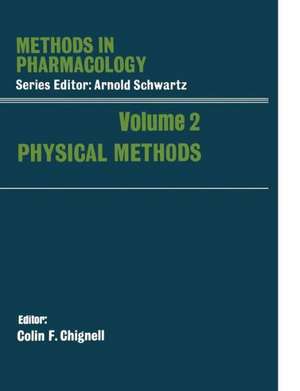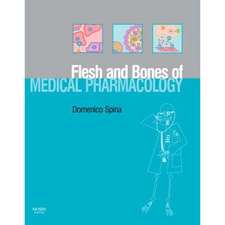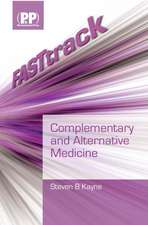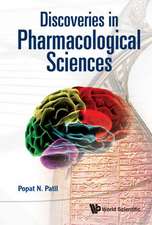Physical Methods
Editat de Colin F. Chignellen Limba Engleză Paperback – 20 ian 2013
Preț: 388.31 lei
Preț vechi: 408.74 lei
-5% Nou
Puncte Express: 582
Preț estimativ în valută:
74.33€ • 80.76$ • 62.47£
74.33€ • 80.76$ • 62.47£
Carte tipărită la comandă
Livrare economică 21 aprilie-05 mai
Preluare comenzi: 021 569.72.76
Specificații
ISBN-13: 9781475701982
ISBN-10: 1475701985
Pagini: 512
Ilustrații: XII, 499 p. 53 illus.
Dimensiuni: 170 x 244 x 27 mm
Greutate: 0.9 kg
Ediția:1972
Editura: Springer Us
Colecția Springer
Locul publicării:New York, NY, United States
ISBN-10: 1475701985
Pagini: 512
Ilustrații: XII, 499 p. 53 illus.
Dimensiuni: 170 x 244 x 27 mm
Greutate: 0.9 kg
Ediția:1972
Editura: Springer Us
Colecția Springer
Locul publicării:New York, NY, United States
Public țintă
ResearchDescriere
This volume, the second in the Methods in Pharmacology series, contains some of the physical methods which either have been or could be applied to pharmaco logical problems. A major emphasis has been placed on spectroscopic techniques, particularly those, such as optical rotatory dispersion and circular dichroism, fluorescence spectroscopy, magnetic resonance spectroscopy, ultraviolet absorption spectroscopy, stopped flow and relaxation spectrometry, Mossbauer spectroscopy, light scatter and x-ray crystallography, that can be used to study drug interactions with biological systems at a molecular level. Although phosphorescence spectro scopy and oscillographic polarography can also be used to study drug interactions, their main usefulness is in the detection and estimation of drugs and their meta bolities in body tissues and fluids. Mass spectrometry is a powerful tool for study ing the metabolism of drugs as well as for detecting abnormal endogenous metabolites in the body. Finally, heatburst microcalorimetry is a non spectroscopic technique that can be used to study how drugs and other ligands interact with biological macromolecules. Each chapter contains a brief introduction to the theoretical basis for each technique as well as a description of the instrumentation involved. This is followed by a section describing the application of the technique to pharmacological prob lems. Where these are not available, examples have been drawn from the other life sciences. In a final section, some further applications of each technique to problems in pharmacology are suggested.
Cuprins
1 Fluorescence Spectroscopy—Theory and Measurement.- 2 Fluorescence Spectroscopy—a Tool for Studying Drug Interactions with Biological Systems.- 3 Phosphorescence Spectroscopy.- 4 The Application of Circular Dichroism and Optical Rotatory Dispersion to Problems in Pharmacology.- 5 Mössbauer Effect Spectrometry in the Study of Biological Phenomena.- 6 Nuclear Magnetic Resonance with Applications to Pharmacology.- 7 Electron Spin Resonance and the Spin Labeling Method.- 8 Scattered Light Measurement for Molecular Pharmacology.- 9 The Spectrophotometric Measurement of Turbid Suspensions of Cytochromes Associated with Drug Metabolism.- 10 Fast Reactions—Flow and Relaxation Methods.- 11 X-Ray Diffraction.- 12 Applications of Mass Spectrometry to Pharmacological Problems.- 13 Oscillographic Polarography.- 14 Heatburst Microcalorimetry.







